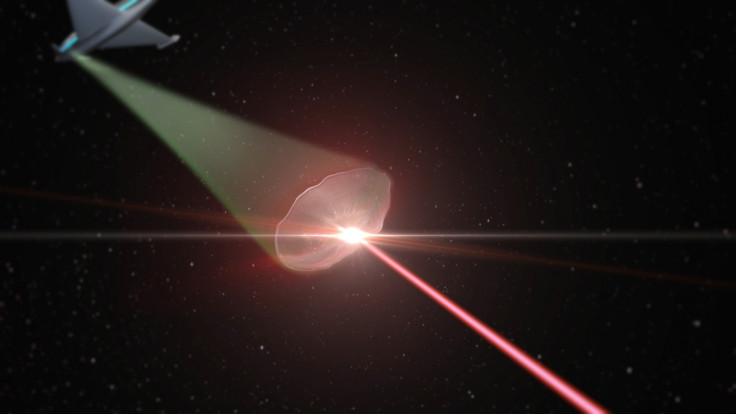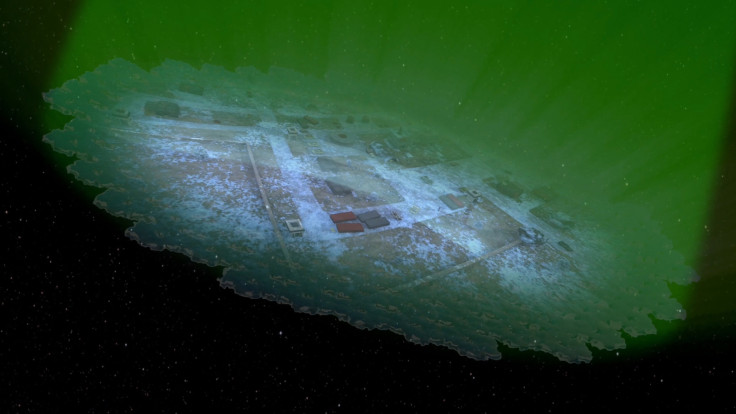BAE Systems using electromagnetic energy to shield armies and enable long-range spying
BAE Systems is using energy in the atmosphere to create on-demand deflector shields and spy lenses.
Aerospace and defence firm BAE Systems has come up with a new idea for protecting the military from laser directed-energy weapons – harness the power of the Earth's atmosphere to produce instant, on-demand deflector shields in mid-air.
The Laser Developed Atmospheric Lens (LDAL) concept works by creating a volume of the atmosphere that causes electromagnetic energy to have its path changed in order to redirect pulses from laser directed-energy weapons (see patent application).
Laser directed-energy weapons are high-tech systems that are powerful enough to take out mortars, missiles and kinetic weapons. With that sort of power, they would also pose a serious threat to troops on the battlefield, which is why we need a way to protect against these weapons.
Most military vehicles such as armoured vehicles, ships and aircraft now come equipped with laser warning receivers that detect and locate the direction of laser emissions. When a laser directed-energy weapon has been fired by an adversary, it will take several seconds before it reaches the military vehicle in question.
Once the laser warner picks up that an adversary's laser emission is headed its way, the idea is for the army's own laser system to immediately begin ionising the atmosphere around the military vehicle to create a virtual deflector shield by sending out millions of laser pulses (see patent application).
The system would operate at the speed of light – in mere milliseconds – which is fast enough to create the shield before the adversary's laser emission strikes, and the shield only stays up for as long as you need it to, so once the system stops sending laser pulses to ionise the atmosphere, the shielding effect disappears.
The shield works to deflect adversary laser beams even if the vehicle is moving, and it only turns on when the laser warning receiver detects that a threat is approaching.
Super long-range spying will also be possible

But that's not all LDAL can do – BAE Systems' scientists also want to make it possible for armies to spy on adversaries from a greater distance, which would also help to keep troops safe during reconnaissance missions. To do this, the system can create a virtual atmospheric lens to focus light on a battlefield that the military is interested in looking at down to a very small sensor fitted on an aircraft (see patent application).
"When you switch on the radio in the car, the radio signal passes through the atmosphere to get to you. That's an example of electromagnetic energy passing through the atmosphere. We're talking about altering the path of light, ultraviolet rays, radio waves and other bands of the electromagnetic spectrum. This is of crucial importance to our military clients and at the moment, can't be done," Professor Nick Colosimo, BAE Systems' Futurist & Global Engineering Fellow told IBTimes UK.
LDAL could also be useful to the space industry as it can be used to develop an alternative to giant radio telescopes like the Arecebo Observatory, which is used to pick up radio signals from space to build a picture of what space looks like from radio wavelengths.

"Instead of having a huge disc to pick up very weak radio signals originating from deep in space, you could create an alternative consisting of the laser atmospheric lens concept. We would selectively ionise parts of the atmosphere and it would focus radio waves down to a small receiver, creating a virtual dish," said Colosimo.
LDAL sounds pretty amazing, but it will take another 50 years before the technology will be ready for the military to deploy as a significant amount of research and development is still required. However, BAE Systems has made a start and currently has 10 patents pending for the technology.
"Today, many high power pulsed laser systems are the size of a large dining table. They're mostly designed for scientific experiments. If we decide to take this concept further, we will need to consider how to miniaturise the system so it fits onto a combat aircraft and how to make it robust [to handle] the accelerations, vibrations and differences in temperature of an aircraft," said Colosimo.
© Copyright IBTimes 2025. All rights reserved.





















